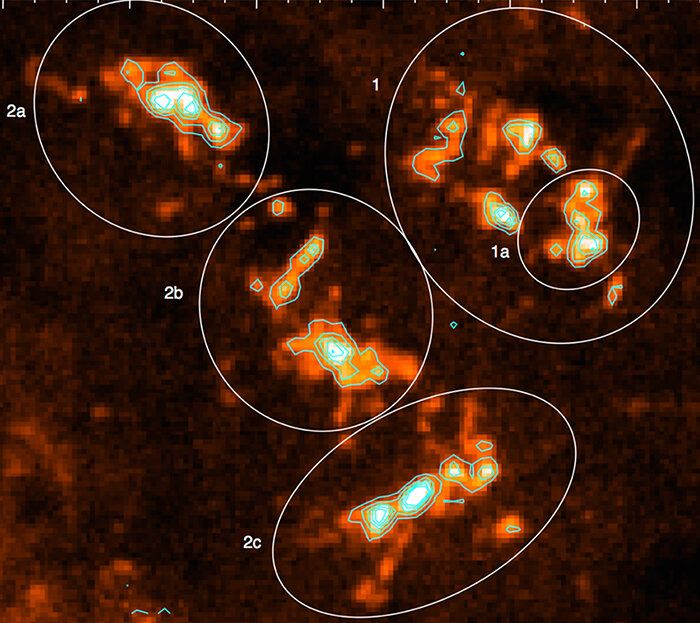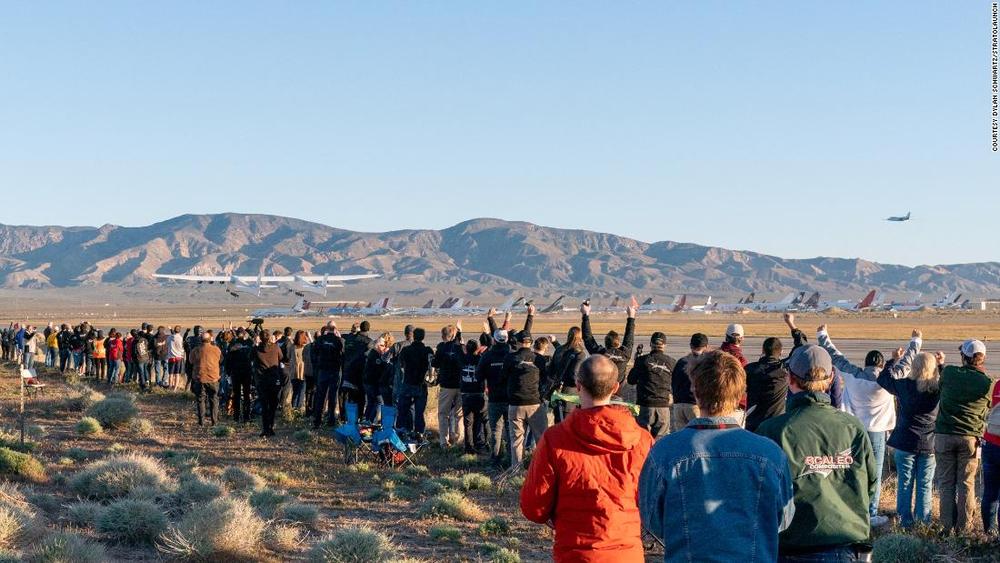With funding from NASA, researchers are exploring how to control inflatable robots for future space missions.



Astronomers from the United States and South Korea have made the first high-resolution, radio telescope observations of the molecular clouds within a massive star-forming region of the outer Milky Way.
“This region is behind a nearby cloud of dust and gas,” said Charles Kerton, an associate professor of physics and astronomy at Iowa State University and a member of the study team. “The cloud blocks the light and so we have to use infrared or radio observations to study it.”
The Milky Way region is called CTB 102. It’s about 14,000 light years from Earth. It’s classified as an HII region, meaning it contains clouds of ionized—charged—hydrogen atoms. And, because of its distance from Earth and the dust and gas in between, it has been difficult to study.

Scientists believe that time is continuous, not discrete—roughly speaking, they believe that it does not progress in “chunks,” but rather “flows,” smoothly and continuously. So they often model the dynamics of physical systems as continuous-time “Markov processes,” named after mathematician Andrey Markov. Indeed, scientists have used these processes to investigate a range of real-world processes from folding proteins, to evolving ecosystems, to shifting financial markets, with astonishing success.
However, invariably a scientist can only observe the state of a system at discrete times, separated by some gap, rather than continually. For example, a stock market analyst might repeatedly observe how the state of the market at the beginning of one day is related to the state of the market at the beginning of the next day, building up a conditional probability distribution of what the state of the second day is given the state at the first day.
In a pair of papers, one appearing in this week’s Nature Communications and one appearing recently in the New Journal of Physics, physicists at the Santa Fe Institute and MIT have shown that in order for such two–time dynamics over a set of “visible states” to arise from a continuous-time Markov process, that Markov process must actually unfold over a larger space, one that includes hidden states in addition to the visible ones. They further prove that the evolution between such a pair of times must proceed in a finite number of “hidden timesteps”, subdividing the interval between those two times. (Strictly speaking, this proof holds whenever that evolution from the earlier time to the later time is noise-free—see paper for technical details.)


When we talk about the enormity of the cosmos 💫, it’s easy to toss out big numbers – but far more difficult to wrap our minds around just how large, how far, and how numerous celestial bodies really are. Join us for a cosmic journey to see the size of our Milky Way galaxy: https://go.nasa.gov/2UxkHIN

After years of development in the desert north of Los Angeles, a gigantic, six-engined mega jet with the wingspan of an American football field flew Saturday morning for the first time.
“We finally did it,” said Stratolaunch Systems CEO Jean Floyd at a news conference from the hangar at Mojave Air & Space Port. “It was an emotional moment to watch this bird take flight.”
Stratolaunch, the company founded in 2011 by the late Microsoft co-founder Paul Allen, conducted the first test flight of the world’s largest plane.


Environmentalism and climate change are increasingly being pushed on us everywhere, and I wanted to write the transhumanism and life extension counter argument on why I prefer new technology over nature and sustainability. Here’s my new article:
On a warming planet bearing scars of significant environmental destruction, you’d think one of the 21st Century’s most notable emerging social groups—transhumanists—would be concerned. Many are not. Transhumanists first and foremost want to live indefinitely, and they are outraged at the fact their bodies age and are destined to die. They blame their biological nature, and dream of a day when DNA is replaced with silicon and data.
Their enmity of biology goes further than just their bodies. They see Mother Earth as a hostile space where every living creature—be it a tree, insect, mammal, or virus—is out for itself. Everything is part of the food chain, and subject to natural law: consumption by violent murder in the preponderance of cases. Life is vicious. It makes me think of pet dogs and cats, and how it’s reported they sometimes start eating their owner after they’ve died.
Many transhumanists want to change all this. They want to rid their worlds of biology. They favor concrete, steel, and code. Where once biological evolution was necessary to create primates and then modern humans, conscious and directed evolution has replaced it. Planet Earth doesn’t need iniquitous natural selection. It needs premeditated moral algorithms conceived by logic that do the most good for the largest number of people. This is something that an AI will probably be better at than humans in less than two decade’s time.
Ironically, fighting the makings of utopia is a coup a half century in the making. Starting with the good-intentioned people at Greenpeace in the 1970s but overtaken recently with enviro-socialists who often seem to want to control every aspect of our lives, environmentalism has taken over political and philosophical discourse and direction at the most powerful levels of society. Green believers want to make you think humans are destroying our only home, Planet Earth—and that this terrible action of ours is the most important issue of our time. They have sounded a call to “save the earth” by trying to stomp out capitalism and dramatically downsizing our carbon footprint.